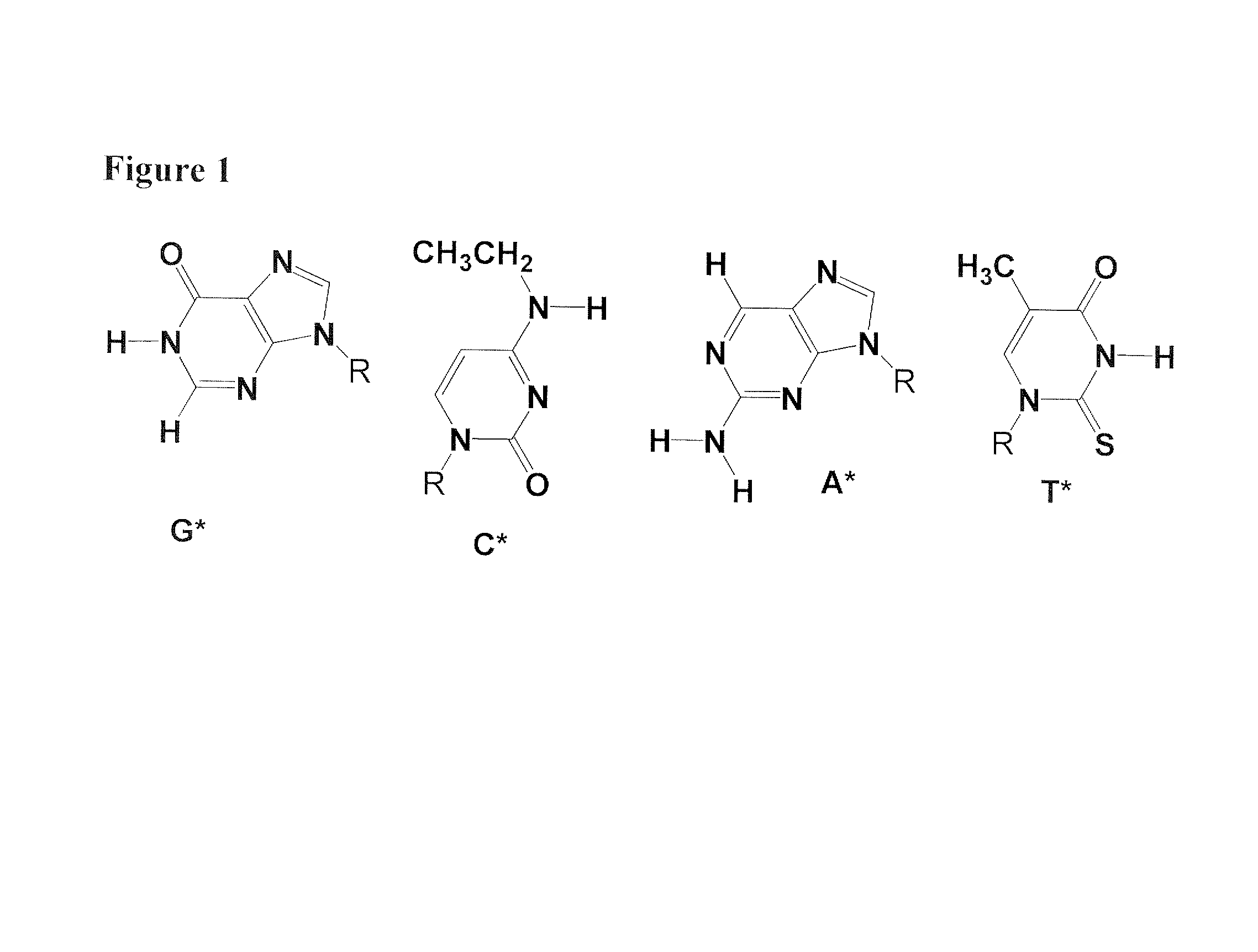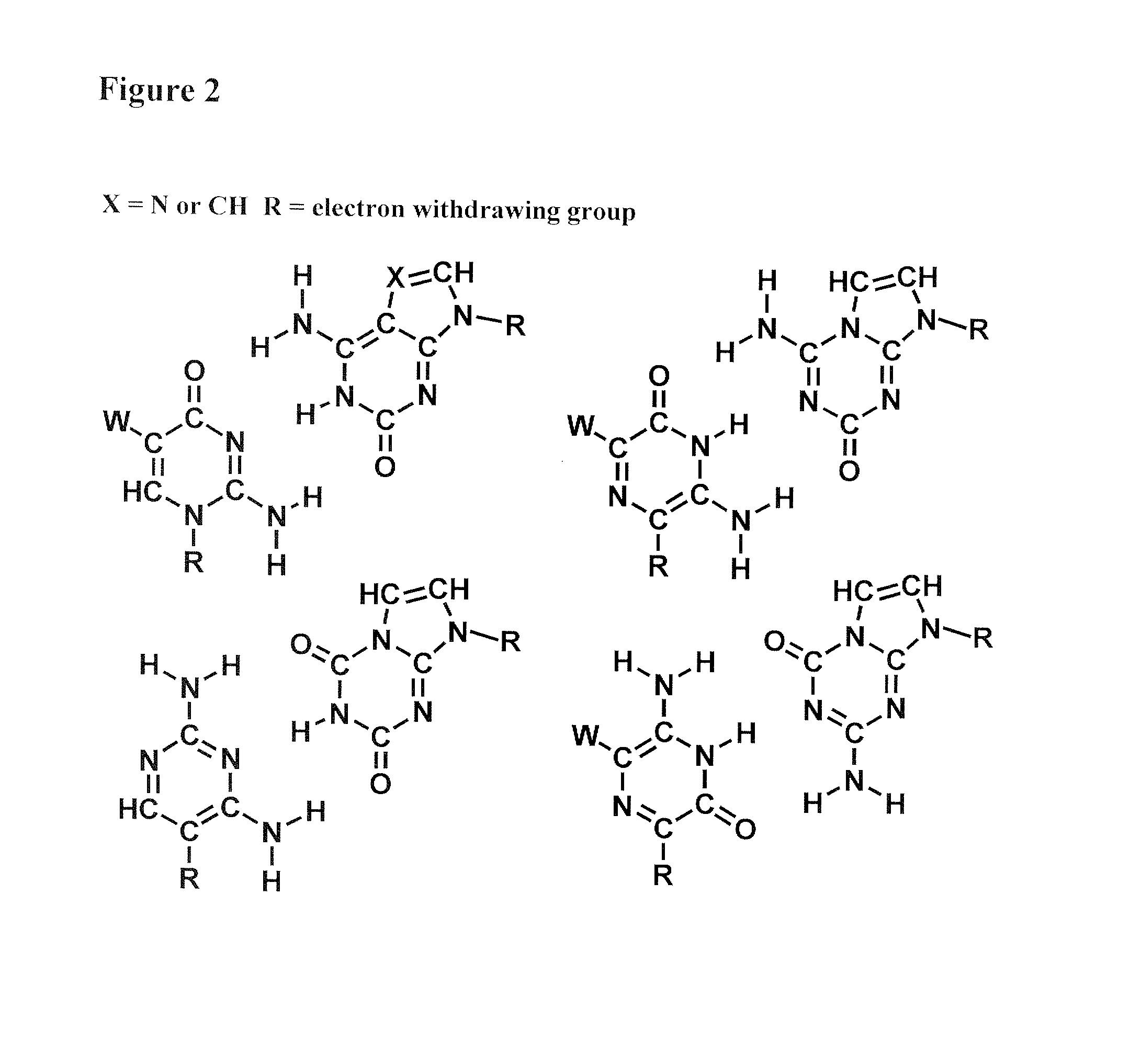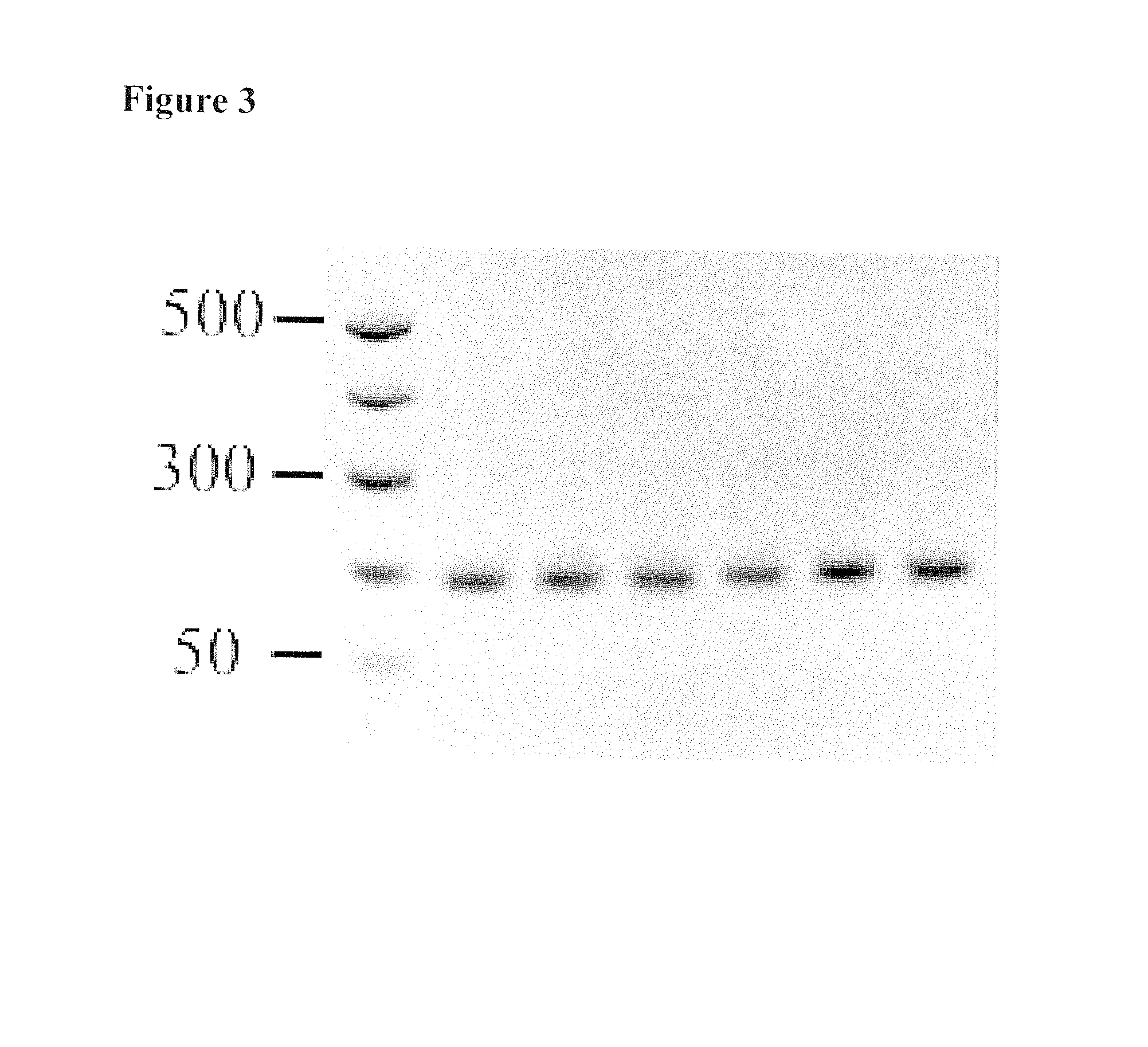Recombinase-based amplification with substitute nucleotides
a technology of substitution nucleotides and amplification methods, applied in the field of nucleic acid chemistry, can solve the problems of amplification failure to complete, and isothermal amplification methods often fail
- Summary
- Abstract
- Description
- Claims
- Application Information
AI Technical Summary
Benefits of technology
Problems solved by technology
Method used
Image
Examples
example 1
Jump Start Reaction to Generate Double Stranded Target DNA
[0025]In this example, we prepared the target molecules to test RPA-like isothermal amplification of influenza and HIV sequences with substituted primers.
[0026]Single-stranded amplimers containing only standard nucleobases were obtained from Integrated DNA Technologies (IDT, Coralville Iowa). The target DNA was introduced in double-stranded form. This was prepared by PCR amplification using the standard primers (Table 2) and single stranded amplimer (Table 1) using Jump Start polymerase and the following recipe.
[0027]A PCR (total volume 50 μL) was performed in Jumpstart buffer (Sigma 1×, 10 mM Tris-HCl, pH 8.3 at 25° C., 50 mM KCl, 1.5 mM MgCl2, and 0.001% gelatin) with the indicated forward and reverse primers (0.25 μM) and dNTPs (0.2 mM), Jumpstart Taq DNA polymerase (0.02 units) and the single-stranded amplimer (0.1 μM). Additional MgCl2 (1 mM) was added to the reaction. The mixture was incubated in a thermal cycler at 95°...
example 2
Quantitation of DNA
[0028]A solution of DNA (1 μL) was prepared in distilled water (100 μL) and its absorbance at 260 nm (A260) was measured. For influenza A as a target, the A260 was 0.010. With an extinction coefficient of 50, this corresponds to 50 ng of DNA / μL. For HIV as a target, the A260 was 0.009 after a 1 / 200 dilution, and the PCR product was quantitated to be 90 ng / μL. To decrease the number of copies of the template to ˜1000, each of the samples was diluted 100,000 fold. The reactions were set up as described above and incubated at 38° C.
Setting Up the RPA (Control) and RPA-Like Reactions
[0029]Reactions were targeted to amplify 1 μL of PCR product after dilution, as follows:
[0030]Control reaction: A 1 / 10 dilution of the control DNA (provided in the kit from TwistDx) was made. The reaction was setup as follows:[0031]1. A 1 / 10 dilution of the positive control DNA was prepared (10 μL, in dH2O).[0032]2. Primer solution (8 μL) was added to a fresh 1.5 ml micro centrifuge tube.[...
experiment 3
lifications with SAMRS and AEGIS-SAMRS Hybrid Primers
[0048]A master mix containing forward and reverse primers (2.4 μL each, 480 nM final concentrations) was reconstituted in rehydration buffer (provided by TwistDx), as follows:
Primer F (standard, SAMRS or AEGIS-SAMRS oligonucleotides): 2.4 μL
Primer R (standard, SAMRS or AEGIS-SAMRS oligonucleotides): 2.4 μL
Rehydration buffer: 29.5 μL
Water: 11.2 μL
[0049]This was placed into pre-prepared tubes (TwistDx) containing the freeze dried RPA pellets, which contain polymerases and other components required for the classical RPA reaction. Then, aliquots (22.75 μL) were transferred to two TwistDx Eppendorf tubes to set up positive reactions and negative control. To create the positive, target DNA template (0.8 μL) was added to one aliquot. Water in equal amounts was added to the other aliquots to create the negative control. To create a reference standard for subsequent gel electrophoresis, DNA solution (0.8 μL) was diluted into water lacking ...
PUM
| Property | Measurement | Unit |
|---|---|---|
| volume | aaaaa | aaaaa |
| temperature | aaaaa | aaaaa |
| temperatures | aaaaa | aaaaa |
Abstract
Description
Claims
Application Information
 Login to View More
Login to View More - R&D
- Intellectual Property
- Life Sciences
- Materials
- Tech Scout
- Unparalleled Data Quality
- Higher Quality Content
- 60% Fewer Hallucinations
Browse by: Latest US Patents, China's latest patents, Technical Efficacy Thesaurus, Application Domain, Technology Topic, Popular Technical Reports.
© 2025 PatSnap. All rights reserved.Legal|Privacy policy|Modern Slavery Act Transparency Statement|Sitemap|About US| Contact US: help@patsnap.com



